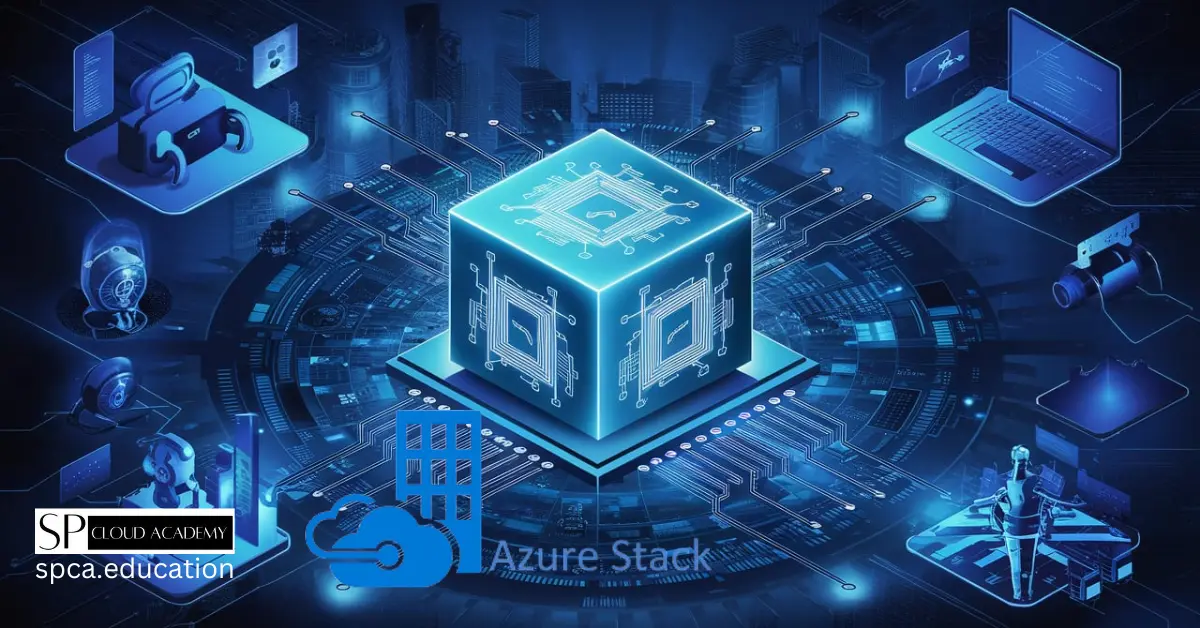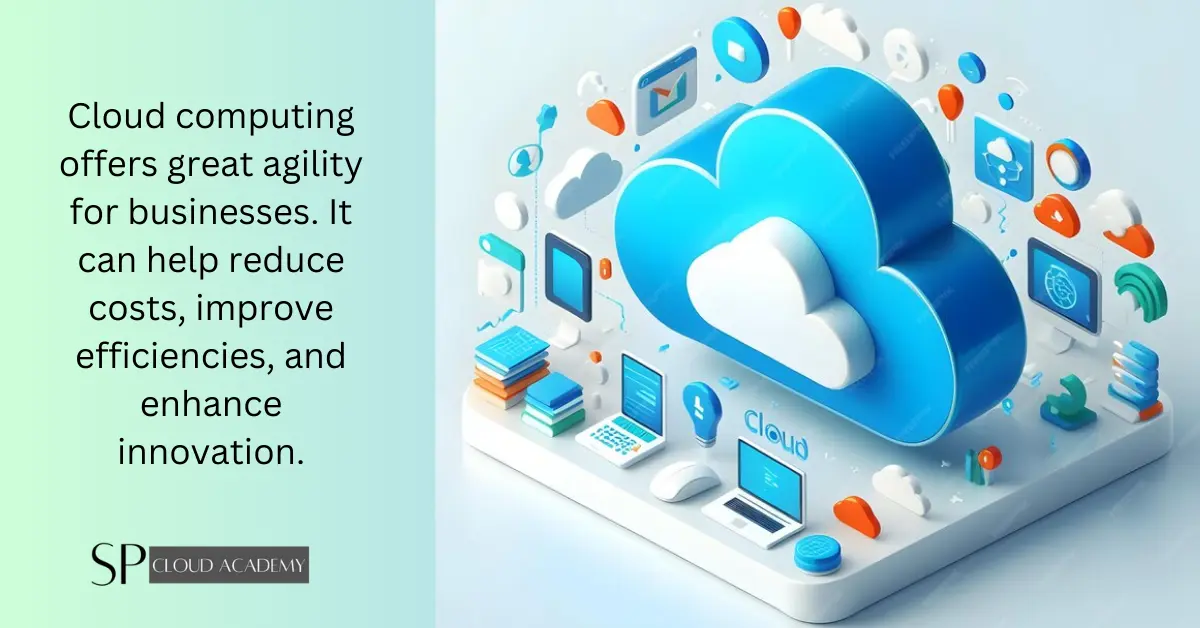The cloud computing landscape is dominated by three tech titans: Amazon Web Services (AWS), Google Cloud Platform (GCP), and Microsoft Azure. These cloud service providers have revolutionized how businesses approach infrastructure, data storage, and digital transformation. With the global cloud computing market projected to reach unprecedented heights, choosing the right cloud platform has become a critical decision for organizations worldwide.
This comprehensive comparison examines AWS vs Google Cloud vs Azure across multiple dimensions, helping you make an informed decision for your cloud strategy. From pricing models to performance metrics, security features to ecosystem integration, we’ll explore every aspect that matters in today’s competitive cloud environment.
Understanding the Cloud Computing Titans
Amazon Web Services: The Pioneer Leader
Amazon Web Services launched in 2006, establishing itself as the first major public cloud platform. With over 200 fully-featured services, AWS commands the largest market share in the cloud infrastructure space. The platform serves millions of customers, from startups to Fortune 500 companies, across 190 countries.
AWS’s extensive service portfolio includes compute power through EC2, storage solutions via S3, database services like RDS, and advanced technologies such as machine learning and artificial intelligence tools. The platform’s maturity shows in its robust documentation, vast community support, and comprehensive partner ecosystem.
The AWS global infrastructure spans 32 geographic regions with 102 Availability Zones, ensuring low latency and high availability for applications worldwide. This extensive reach makes AWS particularly attractive for enterprises with global operations requiring consistent performance across different geographical locations.
Google Cloud Platform: The Innovation Powerhouse
Google Cloud Platform leverages Google’s expertise in data analytics, machine learning, and infrastructure management. Launched in 2011, GCP has quickly gained traction by offering cutting-edge technologies and competitive pricing models. Google’s strength in big data processing and AI capabilities gives GCP a unique positioning in the market.
The platform excels in data analytics with BigQuery, Kubernetes orchestration, and artificial intelligence services through AutoML and TensorFlow integration. Google’s commitment to open-source technologies and sustainable infrastructure appeals to organizations prioritizing innovation and environmental responsibility.
GCP operates across 37 regions and 112 zones, providing global coverage while maintaining Google’s signature focus on performance and reliability. The platform’s integration with Google Workspace and strong emphasis on data analytics makes it particularly attractive for data-driven organizations.
Microsoft Azure: The Enterprise Favorite
Microsoft Azure, launched in 2010, has experienced tremendous growth by leveraging Microsoft’s strong enterprise relationships and software ecosystem. Azure’s seamless integration with Microsoft Office 365, Windows Server, and Active Directory creates compelling value propositions for organizations already invested in Microsoft technologies.
Azure offers hybrid cloud capabilities that allow businesses to integrate on-premises infrastructure with cloud services effectively. This hybrid approach addresses compliance requirements and legacy system integration challenges that many enterprises face during cloud adoption.
With 60+ regions worldwide, Azure provides one of the most extensive global footprints among cloud providers. The platform’s enterprise-grade security features, compliance certifications, and integration capabilities make it a preferred choice for large organizations and government agencies.
Market Share and Industry Position
AWS Market Dominance
Amazon Web Services maintains its position as the undisputed leader in the cloud infrastructure market, holding approximately 33% of the global market share. This dominance stems from AWS’s first-mover advantage, comprehensive service offerings, and continuous innovation across multiple technology domains.
The platform’s revenue continues to grow consistently, with AWS generating over $80 billion in annual revenue. This financial strength enables substantial investments in research and development, new service launches, and global infrastructure expansion. Major enterprises like Netflix, Airbnb, and NASA rely on AWS for their critical operations.
AWS’s marketplace leadership extends beyond infrastructure services to include software-as-a-service offerings, developer tools, and emerging technologies like quantum computing and satellite communications.
Microsoft Azure’s Rapid Growth
Microsoft Azure has emerged as the fastest-growing major cloud platform, capturing approximately 23% of the global cloud market. Azure’s growth trajectory is particularly impressive among enterprise customers, where Microsoft’s existing relationships and software ecosystem provide significant competitive advantages.
The platform’s success in winning large enterprise contracts, including multi-billion-dollar deals with government agencies and Fortune 500 companies, demonstrates its capability to handle mission-critical workloads at scale. Azure’s hybrid cloud approach resonates strongly with organizations managing complex IT environments.
Microsoft’s strategic partnerships with major consulting firms and system integrators have accelerated Azure adoption across various industries, particularly in healthcare, financial services, and manufacturing sectors.
Google Cloud’s Strategic Positioning
Google Cloud Platform holds approximately 10% of the global cloud market but shows strong growth momentum, particularly in specific verticals like retail, media, and financial services. GCP’s focus on data analytics, machine learning, and modern application development attracts organizations prioritizing digital transformation and innovation.
The platform’s competitive pricing strategies and commitment to open-source technologies have helped it gain traction among startups and technology-forward enterprises. Google’s investments in specialized processors and sustainable infrastructure differentiate GCP in the market.
Strategic acquisitions and partnerships have strengthened Google Cloud’s position in enterprise software, cybersecurity, and industry-specific solutions, expanding its addressable market beyond traditional infrastructure services.
Compute Services Comparison
AWS Compute Offerings
Amazon EC2 (Elastic Compute Cloud) provides the foundation of AWS compute services, offering over 500 instance types optimized for different workloads. These instances range from general-purpose computing to specialized configurations for high-performance computing, machine learning, and memory-intensive applications.
AWS Lambda pioneered the serverless computing model, allowing developers to run code without managing servers. This service automatically scales from zero to thousands of concurrent executions, charging only for actual compute time consumed. Lambda’s extensive integration with other AWS services creates powerful event-driven architectures.
Specialized compute services include AWS Batch for batch computing workloads, Amazon ECS and EKS for containerized applications, and AWS Fargate for serverless container deployments. These services address diverse computational requirements across different application architectures.
Azure Compute Capabilities
Azure Virtual Machines offer extensive flexibility with support for both Windows and Linux operating systems. Azure’s compute portfolio includes specialized VM series optimized for compute-intensive, memory-intensive, and storage-optimized workloads. The platform’s integration with Windows ecosystem provides seamless hybrid cloud experiences.
Azure Functions provides serverless computing capabilities comparable to AWS Lambda, with support for multiple programming languages and frameworks. The service integrates deeply with Azure’s ecosystem, enabling complex workflows and data processing pipelines.
Container services include Azure Container Instances for simple container deployments and Azure Kubernetes Service (AKS) for orchestrated container environments. Azure’s commitment to open-source technologies ensures compatibility with standard container tooling and workflows.
Google Cloud Compute Solutions
Google Compute Engine provides high-performance virtual machines with custom machine types that allow precise resource allocation. GCP’s live migration technology enables maintenance without downtime, and sustained use discounts automatically reduce costs for long-running workloads.
Google Cloud Functions offers serverless computing with strong integration to Google’s data and analytics services. The platform’s focus on modern development practices includes native support for containerized functions and multi-language development environments.
Google Kubernetes Engine (GKE) leverages Google’s expertise in container orchestration, providing managed Kubernetes clusters with autopilot mode for hands-off cluster management. GCP’s container-native approach aligns with modern application development practices.
Storage Solutions Analysis
AWS Storage Portfolio
Amazon S3 (Simple Storage Service) has become synonymous with cloud storage, offering 99.999999999% (11 9’s) of data durability. S3 provides multiple storage classes optimized for different access patterns, from frequently accessed data to long-term archival storage. The service’s scalability and reliability make it suitable for everything from backup storage to data lakes.
Amazon EBS (Elastic Block Store) provides persistent, high-performance block storage for EC2 instances. EBS offers multiple volume types optimized for different I/O requirements, from general-purpose SSD to provisioned IOPS for high-performance applications requiring consistent, low-latency storage.
Specialized storage services include Amazon EFS for shared file storage, Amazon FSx for high-performance file systems, and AWS Storage Gateway for hybrid cloud storage integration. These services address diverse storage requirements across different application architectures and use cases.
Azure Storage Services
Azure Blob Storage provides massively scalable object storage with hot, cool, and archive tiers for cost-effective data management. The service offers strong consistency, encryption at rest, and integration with Azure’s analytics and AI services for comprehensive data processing workflows.
Azure Disk Storage delivers high-performance, durable block storage for Azure virtual machines. The service offers multiple disk types, including premium SSDs for high-IOPS workloads and ultra disks for the most demanding applications requiring sub-millisecond latency.
Additional storage options include Azure Files for fully managed file shares, Azure NetApp Files for enterprise-grade NFS storage, and Azure Data Lake Storage for big data analytics workloads. These services provide comprehensive storage solutions for diverse enterprise requirements.
Google Cloud Storage Options
Google Cloud Storage offers unified object storage with automatic data classification and lifecycle management. The service provides multiple storage classes with transparent pricing and automatic data optimization based on access patterns. Integration with Google’s machine learning services enables intelligent data processing and analysis.
Persistent disks provide high-performance block storage with automatic encryption and regional persistent disks for high availability. Google’s focus on performance optimization includes local SSDs for applications requiring extremely low latency and high IOPS.
Cloud Filestore offers managed NFS storage for applications requiring shared file systems, while Google Cloud Storage for Firebase provides mobile and web application storage with real-time synchronization capabilities.
Database Services Deep Dive
AWS Database Ecosystem
Amazon RDS (Relational Database Service) supports six popular database engines: MySQL, PostgreSQL, MariaDB, Oracle, SQL Server, and Amazon Aurora. RDS handles routine database tasks like provisioning, patching, backup, recovery, and monitoring, allowing developers to focus on application development.
Amazon DynamoDB provides managed NoSQL database service with single-digit millisecond performance at any scale. The service offers built-in security, backup and restore, and in-memory caching for internet-scale applications requiring high availability and performance.
Specialized database services include Amazon Redshift for data warehousing, Amazon DocumentDB for document databases, Amazon ElastiCache for in-memory caching, and Amazon Timestream for time-series data. This comprehensive portfolio addresses diverse data management requirements.
Azure Database Services
Azure SQL Database provides intelligent, managed relational database service built on the latest stable version of SQL Server. The service offers built-in intelligence that learns application patterns and adapts to maximize performance, reliability, and data protection.
Azure Cosmos DB delivers globally distributed, multi-model database service with guaranteed low latency and high availability. The service supports multiple data models including document, key-value, graph, and column-family, with multiple API compatibility options.
Additional database services include Azure Database for MySQL and PostgreSQL, Azure Synapse Analytics for data warehousing, and Azure Cache for Redis for high-performance caching. These services provide comprehensive data management solutions for modern applications.
Google Cloud Database Portfolio
Cloud SQL provides fully managed relational databases for MySQL, PostgreSQL, and SQL Server with automated backups, replication, and failover capabilities. The service offers high availability configurations and read replicas for improved performance and disaster recovery.
Cloud Firestore offers serverless, NoSQL document database with real-time synchronization and offline support. The service scales automatically and integrates seamlessly with Firebase for mobile and web application development.
Specialized offerings include BigQuery for data warehousing and analytics, Cloud Spanner for globally consistent relational databases, and Cloud Bigtable for large analytical and operational workloads. Google’s expertise in data management shines through these innovative database services.
Networking and Content Delivery
AWS Networking Infrastructure
Amazon VPC (Virtual Private Cloud) provides isolated network environments within AWS with complete control over IP addressing, subnets, routing tables, and network gateways. VPC enables secure communication between AWS resources and integration with on-premises infrastructure through VPN and Direct Connect.
Amazon CloudFront offers global content delivery network with edge locations worldwide, providing low latency content delivery and DDoS protection. The service integrates seamlessly with other AWS services and supports both static and dynamic content delivery with advanced caching strategies.
Advanced networking services include AWS Transit Gateway for connecting multiple VPCs and on-premises networks, AWS Global Accelerator for improved global application performance, and Route 53 for scalable DNS and domain name registration services.
Azure Networking Solutions
Azure Virtual Network provides isolated and secure network environments with customizable IP address spaces, subnets, and network security policies. The service supports hybrid connectivity through VPN Gateway and ExpressRoute for dedicated private connections to on-premises infrastructure.
Azure CDN delivers content globally through Microsoft’s extensive edge network, offering multiple CDN providers and advanced features like dynamic site acceleration and mobile optimization. The service integrates with Azure services and provides comprehensive analytics and monitoring capabilities.
Additional networking services include Azure Load Balancer for high availability, Azure Application Gateway for web application firewall and load balancing, and Azure Traffic Manager for DNS-based traffic routing across global endpoints.
Google Cloud Networking Features
Google Cloud VPC provides global virtual networks with automatic scaling and advanced security features. The platform’s software-defined networking approach enables fine-grained control over traffic flow and security policies across multiple regions and projects.
Cloud CDN leverages Google’s global infrastructure to deliver content with low latency and high transfer speeds. The service offers intelligent caching strategies and integration with Google Cloud load balancing for optimal performance and reliability.
Networking portfolio includes Cloud Load Balancing for global load distribution, Cloud Interconnect for private connectivity to on-premises infrastructure, and Cloud DNS for reliable, low-latency DNS serving with global anycast network.
Security and Compliance Features
AWS Security Framework
AWS implements a shared responsibility model where AWS secures the underlying infrastructure while customers secure their applications and data. The platform offers comprehensive security services including AWS Identity and Access Management (IAM) for fine-grained access control, AWS Shield for DDoS protection, and AWS WAF for web application security.
Encryption capabilities include AWS Key Management Service (KMS) for encryption key management, AWS CloudHSM for hardware-based key storage, and encryption in transit and at rest across all services. These features ensure data protection throughout its lifecycle in the cloud environment.
Compliance certifications include SOC 1/2/3, PCI DSS, HIPAA, GDPR, and numerous industry-specific standards. AWS maintains compliance across multiple jurisdictions and provides tools for customers to achieve their own compliance requirements through services like AWS Config and AWS CloudTrail.
Azure Security Architecture
Microsoft Azure implements Zero Trust security architecture with integrated security services across the platform. Azure Active Directory provides identity and access management with multi-factor authentication, conditional access policies, and integration with on-premises Active Directory environments.
Azure Security Center offers unified security management and threat protection across hybrid cloud workloads. The service provides security assessments, recommendations, and advanced threat detection with integration to Microsoft’s global security intelligence network.
Compliance portfolio includes over 90 compliance offerings, covering global, government, industry, and regional standards. Azure’s commitment to compliance includes services like Azure Policy for governance and Azure Blueprints for repeatable, compliant deployments.
Google Cloud Security Model
Google Cloud Security implements defense-in-depth security with multiple layers of protection including secure boot, encryption by default, and identity-aware proxy for zero-trust access. The platform leverages Google’s expertise in security from protecting its own services and infrastructure.
Cloud Identity and Access Management (Cloud IAM) provides granular access control with predefined roles and custom role creation capabilities. The service integrates with Google Workspace and supports external identity providers for comprehensive identity management.
Security services include Cloud Security Command Center for centralized security management, Chronicle for security analytics, and Binary Authorization for container security. Google’s focus on open-source security tools ensures transparency and community validation of security practices.
Pricing Models and Cost Optimization
AWS Pricing Strategy
AWS offers multiple pricing models including On-Demand pricing for flexibility, Reserved Instances for predictable workloads with up to 75% savings, and Spot Instances for fault-tolerant applications with up to 90% savings. This variety enables cost optimization across different workload characteristics and business requirements.
The platform provides comprehensive cost management tools including AWS Cost Explorer for spending analysis, AWS Budgets for cost monitoring and alerting, and AWS Trusted Advisor for optimization recommendations. These tools help organizations understand and control their cloud spending effectively.
AWS Free Tier offers 12 months of free access to many services, enabling organizations to experiment and learn without financial commitment. The free tier includes substantial allocations for compute, storage, and database services, supporting proof-of-concept development and small applications.
Azure Pricing Approach
Microsoft Azure provides flexible pricing options including pay-as-you-go, reserved instances with significant discounts, and Azure Hybrid Benefit for existing Microsoft license holders. The hybrid benefit can provide substantial savings for organizations with existing Windows Server and SQL Server licenses.
Azure Cost Management and Billing offer comprehensive cost tracking, budgeting, and optimization recommendations. The platform’s integration with Microsoft’s enterprise agreements provides familiar procurement processes for existing Microsoft customers.
Azure also offers a free tier with $200 credit for the first month and free access to popular services for 12 months. Educational institutions and startups can access additional credits and benefits through specialized programs.
Google Cloud Pricing Philosophy
Google Cloud Platform offers sustained use discounts that automatically apply to long-running workloads, and committed use discounts for predictable resource requirements. The platform’s transparent pricing model with per-minute billing (after the first minute) provides cost efficiency for variable workloads.
Google Cloud’s pricing calculator and cost management tools help organizations estimate and monitor their cloud spending. The platform’s focus on automatic optimization includes rightsizing recommendations and idle resource identification.
The Google Cloud Free Tier provides $300 in credits for new customers and always-free usage limits for specific services. Google’s commitment to competitive pricing includes regular price reductions and innovative pricing models like preemptible instances for batch workloads.
Performance and Reliability Metrics
AWS Performance Standards
Amazon Web Services maintains high availability through its global infrastructure with multiple Availability Zones in each region, providing redundancy and fault tolerance. The platform’s Service Level Agreements (SLAs) guarantee 99.99% availability for most services, with some services offering even higher availability guarantees.
AWS’s network infrastructure utilizes custom-built hardware and software optimizations to deliver consistent, low-latency performance. The platform’s content delivery network and edge computing capabilities ensure optimal user experiences regardless of geographic location.
Performance monitoring through Amazon CloudWatch provides comprehensive metrics and logging capabilities, enabling proactive performance management and troubleshooting. The service offers real-time monitoring, custom metrics, and automated scaling based on performance thresholds.
Azure Reliability Framework
Microsoft Azure’s global infrastructure spans more regions than any other cloud provider, ensuring low latency and high availability for applications worldwide. Azure’s 99.99% SLA for virtual machines and higher availability guarantees for platform services demonstrate the platform’s reliability commitments.
The platform’s performance optimization includes accelerated networking, premium storage options, and intelligent routing for optimal application performance. Azure’s integration with Microsoft’s global network infrastructure provides consistent performance across different regions and services.
Azure Monitor provides comprehensive observability across applications, infrastructure, and networks with advanced analytics and machine learning-powered insights. The service enables proactive issue identification and resolution before they impact user experiences.
Google Cloud Performance Excellence
Google Cloud Platform leverages Google’s global network infrastructure, which carries a significant portion of global internet traffic, ensuring high performance and reliability. The platform’s custom-designed hardware and software stack provides optimized performance for various workload types.
GCP’s live migration technology enables maintenance without downtime, and the platform’s focus on automation reduces the impact of human error on system reliability. Google’s expertise in distributed systems ensures robust, fault-tolerant service delivery.
Cloud Monitoring and Cloud Logging provide comprehensive observability with intelligent alerting and automated remediation capabilities. Google’s machine learning-powered monitoring helps identify performance anomalies and optimization opportunities automatically.
Developer Tools and Ecosystem
AWS Developer Experience
AWS provides comprehensive developer tools including AWS CodeCommit for source control, AWS CodeBuild for continuous integration, AWS CodeDeploy for automated deployments, and AWS CodePipeline for continuous delivery. These tools integrate seamlessly with popular development platforms and third-party tools.
The AWS Command Line Interface (CLI) and Software Development Kits (SDKs) support multiple programming languages and platforms, enabling developers to integrate AWS services into their applications efficiently. Extensive documentation, tutorials, and community resources support developer productivity.
AWS Lambda’s serverless computing model enables event-driven development with automatic scaling and pay-per-execution pricing. The service’s integration with other AWS services creates powerful, serverless application architectures with minimal infrastructure management overhead.
Azure Development Platform
Microsoft Azure offers integrated development tools through Azure DevOps Services, including Azure Repos for Git repositories, Azure Pipelines for CI/CD, Azure Boards for project management, and Azure Test Plans for testing workflows. These tools integrate with popular development environments like Visual Studio and Visual Studio Code.
Azure’s support for multiple programming languages, frameworks, and development platforms ensures flexibility for development teams with diverse technical backgrounds. The platform’s containers and Kubernetes support enable modern application development practices.
GitHub integration following Microsoft’s acquisition provides enhanced collaboration and source code management capabilities. Azure’s commitment to open-source development includes contributions to major projects and support for open-source tools and frameworks.
Google Cloud Development Environment
Google Cloud Platform provides Cloud Build for continuous integration and delivery, Cloud Source Repositories for Git-based source control, and Cloud Deployment Manager for infrastructure as code. These tools integrate with popular development platforms and support modern DevOps practices.
The platform’s container-native approach with Google Kubernetes Engine and Cloud Run enables modern application development with microservices architectures. Google’s expertise in containerization ensures robust, scalable container orchestration capabilities.
Integration with popular development tools and IDEs, comprehensive APIs, and client libraries across multiple programming languages support diverse development workflows. Google’s commitment to open-source technologies ensures compatibility with standard development toolchains.
Machine Learning and AI Capabilities
AWS AI and Machine Learning
Amazon Web Services offers comprehensive AI and ML services across three layers: infrastructure, platform services, and application services. SageMaker provides a fully managed machine learning platform for building, training, and deploying ML models at scale with integrated Jupyter notebooks and model management capabilities.
Pre-built AI services include Amazon Rekognition for image and video analysis, Amazon Polly for text-to-speech, Amazon Lex for conversational interfaces, and Amazon Comprehend for natural language processing. These services enable organizations to add AI capabilities without machine learning expertise.
AWS’s ML infrastructure includes specialized compute instances with GPUs and custom silicon like AWS Inferentia for machine learning inference workloads. The platform’s scalability enables training large models and serving predictions at global scale with consistent performance.
Azure AI Platform
Microsoft Azure AI platform provides comprehensive machine learning capabilities through Azure Machine Learning service, offering automated ML, drag-and-drop ML designer, and comprehensive MLOps capabilities for enterprise-scale machine learning workflows.
Cognitive Services provide pre-built AI APIs for vision, speech, language, and decision-making capabilities. These services integrate easily into applications and offer customization options for specific business requirements. Azure’s AI services leverage Microsoft’s research in artificial intelligence and natural language processing.
Azure’s AI infrastructure includes specialized virtual machines with GPUs and FPGAs for high-performance computing workloads. The platform’s integration with Microsoft’s productivity tools and enterprise software creates unique opportunities for AI-powered business applications.
Google Cloud AI Solutions
Google Cloud AI platform leverages Google’s expertise in artificial intelligence and machine learning, offering Vertex AI as a unified machine learning platform for building, deploying, and scaling ML models. The platform includes AutoML for automated machine learning and custom training for advanced use cases.
Pre-trained AI models include Vision AI for image analysis, Natural Language AI for text understanding, Translation AI for multilingual applications, and Speech-to-Text for audio processing. These services reflect Google’s leadership in AI research and development.
Google’s AI infrastructure includes Tensor Processing Units (TPUs) designed specifically for machine learning workloads, providing superior performance for training and inference compared to traditional processors. The platform’s integration with TensorFlow and other open-source ML frameworks supports diverse development preferences.
Integration and Migration Capabilities
AWS Migration Services
AWS provides comprehensive migration services including AWS Migration Hub for tracking migration progress, AWS Database Migration Service for database migrations, and AWS Server Migration Service for virtual machine migrations. These tools simplify the complex process of moving workloads from on-premises to cloud environments.
The AWS Well-Architected Framework provides best practices and guidance for building secure, high-performing, resilient, and efficient infrastructure. Migration specialists and professional services help organizations plan and execute large-scale migrations with minimal business disruption.
Hybrid cloud capabilities include AWS Outposts for on-premises AWS infrastructure, AWS Storage Gateway for hybrid storage integration, and AWS Direct Connect for dedicated network connections. These services enable gradual migration and hybrid operational models.
Azure Migration Framework
Microsoft Azure offers Azure Migrate as a centralized hub for migration tools and services, supporting assessment and migration of on-premises servers, databases, and applications. The platform’s strong integration with existing Microsoft environments simplifies migration for Windows-based infrastructure.
Azure Site Recovery provides disaster recovery and migration capabilities with automated failover and failback options. Azure Database Migration Service supports migration from multiple database platforms to Azure database services with minimal downtime.
Hybrid integration through Azure Arc enables management of on-premises, multi-cloud, and edge resources through Azure Resource Manager. This unified management approach simplifies operations across hybrid environments and enables consistent governance policies.
Google Cloud Migration Tools
Google Cloud provides comprehensive migration tools including Migrate for Compute Engine for virtual machine migration, Database Migration Service for database transitions, and Transfer Service for data migration. These tools support migrations from on-premises, other clouds, and different Google Cloud projects.
Cloud adoption framework and migration methodology provide structured approaches to cloud transformation with assessment tools, migration planning, and best practices. Google’s partnership ecosystem includes specialized migration partners and professional services.
Anthos enables consistent application deployment and management across on-premises, Google Cloud, and other cloud environments using Kubernetes. This platform approach simplifies application modernization and enables portable, cloud-native application development.
Support and Documentation Quality
AWS Support Structure
Amazon Web Services offers multiple support tiers including Basic (free), Developer, Business, and Enterprise support plans with different response times and access levels. Enterprise support includes dedicated Technical Account Managers and access to AWS Support API for integration with existing workflows.
AWS documentation includes comprehensive guides, API references, tutorials, and best practices across all services. The platform’s active community forums, training materials, and certification programs support skill development and problem resolution.
AWS re:Invent and other events provide learning opportunities and direct access to AWS experts and product teams. The platform’s extensive partner ecosystem includes consulting firms, technology vendors, and specialized service providers supporting customer success.
Azure Support Options
Microsoft Azure provides multiple support plans from Basic (included) to Premier support with different response time guarantees and technical support scopes. Azure’s integration with Microsoft’s enterprise support model provides familiar support experiences for existing Microsoft customers.
Documentation quality reflects Microsoft’s focus on developer experience with comprehensive guides, code samples, and learning paths. Azure’s integration with Microsoft Learn provides structured learning experiences and hands-on labs for skill development.
Microsoft’s global presence and extensive partner network provide local support and expertise across different regions and industries. The company’s investment in customer success includes dedicated customer success managers for enterprise accounts.
Google Cloud Support Experience
Google Cloud offers multiple support packages from Basic to Premium support with guaranteed response times and technical support coverage. The platform’s focus on customer success includes customer reliability engineering and proactive support for enterprise customers.
Documentation and learning resources emphasize hands-on experience with Qwiklabs providing interactive learning environments. Google’s commitment to open-source communities ensures extensive community-driven resources and contributions.
Google Cloud Next and other events provide learning opportunities and networking with Google engineers and industry experts. The platform’s growing partner ecosystem includes system integrators, independent software vendors, and consulting firms supporting customer implementations.
Future Roadmap and Innovation
AWS Innovation Pipeline
Amazon Web Services continues investing heavily in emerging technologies including quantum computing through Amazon Braket, satellite communications with AWS Ground Station, and edge computing with AWS Wavelength. The platform’s pace of innovation includes hundreds of new features and services launched annually.
Sustainability initiatives include commitments to renewable energy and carbon neutrality, with investments in renewable energy projects and efficient cooling technologies. AWS’s Climate Pledge demonstrates long-term commitment to environmental responsibility.
Industry-specific solutions and vertical expertise continue expanding with specialized services for healthcare, financial services, automotive, and other industries. AWS’s customer obsession drives continuous innovation based on customer feedback and emerging market requirements.
Azure Future Vision
Microsoft Azure’s roadmap emphasizes hybrid and multi-cloud capabilities with consistent management and security across different environments. The platform’s integration with Microsoft’s productivity and collaboration tools creates unique value propositions for digital workplace initiatives.
Sustainability commitments include carbon negativity by 2030 and investments in renewable energy and carbon capture technologies. Azure’s approach to responsible AI includes fairness, reliability, and transparency principles embedded in AI service development.
Industry cloud initiatives provide pre-configured solutions for healthcare, financial services, retail, and manufacturing with industry-specific compliance and functionality. Microsoft’s domain expertise in enterprise software translates into comprehensive industry solutions.
Google Cloud Strategic Direction
Google Cloud Platform’s future focuses on data analytics, artificial intelligence, and sustainable computing with continued investments in custom silicon and renewable energy infrastructure. The platform’s open-source commitment ensures compatibility with evolving technology standards.
Sustainability leadership includes commitments to carbon neutrality and renewable energy with transparent reporting and industry collaboration. Google’s expertise in energy efficiency from operating global internet services benefits cloud customers through optimized infrastructure.
Industry solutions leverage Google’s expertise in advertising technology, retail, and consumer services to provide specialized capabilities for digital transformation. The platform’s focus on data and analytics creates compelling value propositions for data-driven organizations.
Comprehensive Comparison Table
| Feature | AWS | Microsoft Azure | Google Cloud |
|---|---|---|---|
| Market Share | ~33% (Leader) | ~23% (Growing) | ~10% (Innovator) |
| Global Regions | 32 regions, 102 AZs | 60+ regions | 37 regions, 112 zones |
| Launch Year | 2006 | 2010 | 2011 |
| Primary Strength | Comprehensive services | Enterprise integration | Data analytics & AI |
| Target Audience | All segments | Enterprise-focused | Data-driven orgs |
| Compute Services | EC2, Lambda, Fargate | Virtual Machines, Functions | Compute Engine, Cloud Run |
| Storage Solutions | S3, EBS, EFS | Blob, Disk, Files | Cloud Storage, Persistent Disk |
| Database Options | RDS, DynamoDB, Aurora | SQL Database, Cosmos DB | Cloud SQL, Firestore, Spanner |
| Container Platform | ECS, EKS | AKS, Container Instances | GKE, Cloud Run |
| Serverless Computing | Lambda | Azure Functions | Cloud Functions |
| AI/ML Platform | SageMaker | Azure ML | Vertex AI |
| Data Warehouse | Redshift | Synapse Analytics | BigQuery |
| CDN Service | CloudFront | Azure CDN | Cloud CDN |
| Identity Management | IAM | Active Directory | Cloud IAM |
| Pricing Model | On-demand, Reserved, Spot | Pay-as-go, Reserved, Hybrid | On-demand, Committed use |
| Free Tier | 12 months + Always free | $200 credit + 12 months | $300 credit + Always free |
| Enterprise Focus | High | Very High | Medium |
| Hybrid Cloud | Good | Excellent | Good |
| Open Source | Good | Medium | Excellent |
| Compliance Certs | 100+ | 90+ | 80+ |
| Support Tiers | 4 tiers | Multiple plans | 4 packages |
| Documentation | Excellent | Very Good | Excellent |
| Learning Resources | Extensive | Microsoft Learn | Qwiklabs |
| Best For | Comprehensive needs | Microsoft ecosystem | Analytics & innovation |
| Weaknesses | Complex pricing | Newer platform | Smaller market share |
Quick Decision Matrix
| If You Need | Choose AWS | Choose Azure | Choose GCP |
|---|---|---|---|
| Largest service catalog | ✅ Primary choice | ❌ Not ideal | ❌ Not ideal |
| Microsoft integration | ❌ Not ideal | ✅ Primary choice | ❌ Not ideal |
| Advanced AI/ML | ✅ Good option | ✅ Good option | ✅ Primary choice |
| Hybrid cloud | ✅ Good option | ✅ Primary choice | ❌ Not ideal |
| Startup-friendly | ✅ Good option | ❌ Not ideal | ✅ Primary choice |
| Enterprise compliance | ✅ Primary choice | ✅ Primary choice | ✅ Good option |
| Cost optimization | ✅ Good option | ✅ Good option | ✅ Primary choice |
| Global presence | ✅ Primary choice | ✅ Primary choice | ✅ Good option |
| Data analytics | ✅ Good option | ✅ Good option | ✅ Primary choice |
| Container-native | ✅ Good option | ✅ Good option | ✅ Primary choice |
Conclusion and Recommendations
The choice between AWS, Google Cloud, and Microsoft Azure depends on specific organizational requirements, existing technology investments, and strategic priorities. Each platform offers compelling advantages and capabilities that can support successful cloud adoption and digital transformation initiatives.
AWS remains the market leader with the most comprehensive service portfolio and mature ecosystem, making it suitable for organizations requiring extensive functionality and proven reliability. The platform’s first-mover advantage and continuous innovation ensure access to cutting-edge technologies and industry best practices.
Microsoft Azure provides exceptional value for organizations with existing Microsoft investments, offering seamless integration and hybrid cloud capabilities. The platform’s enterprise focus and compliance certifications make it particularly suitable for large organizations with complex requirements.
Google Cloud Platform excels in data analytics, machine learning, and modern application development with competitive pricing and innovative technologies. The platform’s focus on open-source compatibility and sustainable infrastructure appeals to technology-forward organizations.
Successful cloud adoption requires careful evaluation of workload requirements, cost considerations, compliance needs, and organizational capabilities. Many organizations adopt multi-cloud strategies to leverage the unique strengths of different platforms while avoiding vendor lock-in and maximizing flexibility.
The cloud computing landscape continues evolving rapidly with new services, capabilities, and competitive dynamics emerging regularly. Organizations should maintain flexibility in their cloud strategies while building expertise across multiple platforms to maximize the benefits of cloud computing for their business objectives.
See Also
-

Is Your Cloud Data Safe? The Must-Have Storage Policy Every Business Needs
-

No More Limits: Cloud Computing Labs Are the Key to Hands-On Practice Without Boundaries
-

From Sketch to Screen: The Cloud-Powered Future of 3D Modeling and Rendering
-

Unlocking 24/7 Learning: The Power of Cloud Computing Labs in Modern Education
-

Unlock the Power of Cloud: Exploring the Bitnami Application Catalog for Seamless App Deployment
-

What are the Top Skills Needed to Transition into a Cloud Architect Role?
-

Unlocking the Power of Azure Stack: Revolutionizing Hybrid Cloud for Modern Enterprises
-

The Ultimate Guide to Cloud Applications: Benefits, Trends, and Best Practices
-

Future-Proof Your Career: Exploring the Latest Microsoft Cloud Certifications for 2024
